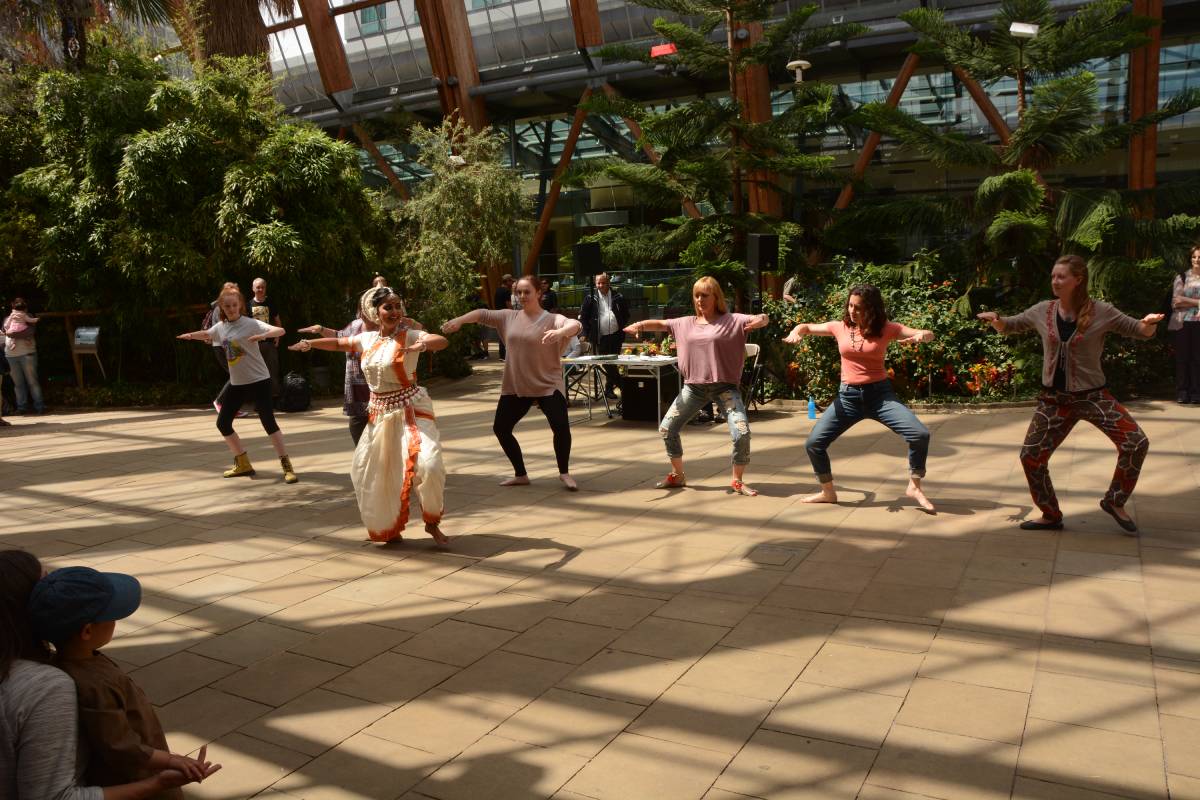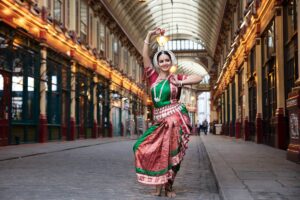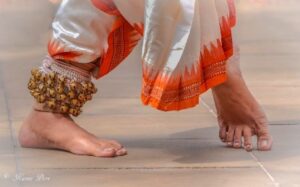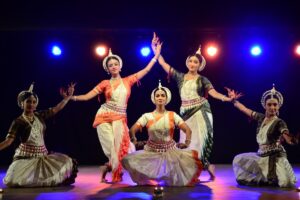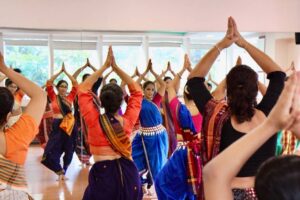Indian classical dance refers to the traditional dance forms of India, which have developed and evolved over thousands of years. These dance forms are characterized by their use of elaborate costumes, expressive facial expressions, and intricate hand gestures and body movements. There are several different styles of Indian classical dance, including Bharatanatyam, Kathak, Odissi, Kathakali, Kuchipudi, and Manipuri. These dance forms are often associated with Hindu religious rituals and traditions, and are performed in temples, at festivals, and in theatres.
Indian classical dance is known for its beauty and grace, as well as its technical precision and artistic expression. The dancers are trained to use their bodies as a medium for storytelling, conveying emotions and ideas through intricate hand gestures, facial expressions, and body movements. The costumes and makeup used in Indian classical dance are also an important part of the overall aesthetic, and are often colourful and ornately decorated.
One of the most striking aspects of Indian classical dance is the use of mudras, or hand gestures. These gestures are used to convey meaning and emotion, and are an integral part of the dance form. They can be used to depict various objects, animals, or concepts, and are often used in combination with facial expressions and body movements to convey a specific meaning or emotion.
Another beautiful aspect of Indian classical dance is the music that accompanies it. The music is typically played on traditional instruments such as the sitar, tabla, and harmonium, and features complex rhythms and melodies. The music and the dance work together to create an immersive and expressive performance that can be both moving and entertaining.
Overall, the beauty of Indian classical dance lies in its ability to bring together elements of music, storytelling, and artistic expression to create a truly captivating and mesmerizing performance.
Overall these dances are an important part of the cultural heritage of India, and are often used to tell stories, depict mythological characters, and express emotions. Indian classical dance is an important part of the country’s cultural identity, and is a source of pride and inspiration for many people in India and around the world.
Indian classical dance is an ancient and rich art form that has evolved over centuries in different regions of India. It is deeply rooted in Indian culture and tradition, and is known for its grace, fluidity, and intricate movements. There are eight major classical dance forms in India, each with its own unique style, technique, and repertoire.
Bharatanatyam:
Bharatanatyam is one of the oldest and most popular classical dance forms in India. It originated in Tamil Nadu and is known for its expressive and intricate footwork, hand gestures, and facial expressions. The dance form is characterized by its rhythmic patterns and the use of adavus, which are small dance sequences that are used to build larger choreographies.
Kathak:
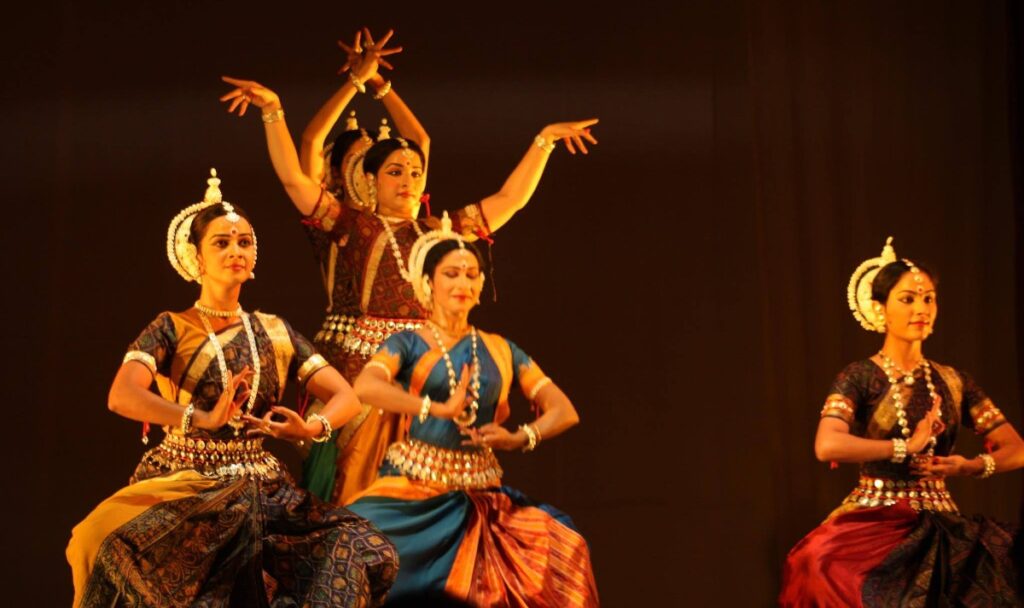
Kathak is a classical dance form that originated in northern India. The dance form is known for its graceful movements and intricate footwork, as well as its use of storytelling through dance. The dance form is characterized by its use of rhythmic patterns, pirouettes, and chakkars, which are fast spins.
Kuchipudi:
Kuchipudi is a classical dance form that originated in Andhra Pradesh. It is known for its intricate footwork, graceful movements, and expressive facial expressions. The dance form includes elements of storytelling, mime, and dance, and is characterized by its use of fast movements and intricate hand gestures.
Manipuri:
Manipuri is a classical dance form that originated in Manipur, a northeastern state of India. It is known for its graceful movements, soft footwork, and fluid hand gestures. The dance form is characterized by its use of circular movements, slow and graceful steps, and the use of the pung, a traditional Manipuri drum.
Mohiniyattam:
Mohiniyattam is a classical dance form that originated in Kerala. It is known for its graceful movements, fluid hand gestures, and expressive facial expressions. The dance form is characterized by its use of soft and gentle movements, and storytelling through dance.
Odissi:
Odissi is a classical dance form that originated in the state of Odisha. It is known for its graceful movements, intricate footwork, and expressive hand gestures. The dance form is characterized by its use of sculpturesque poses, and its emphasis on the tribhangi posture, which involves bending of the head, torso, and knee.
Sattriya:
Sattriya is a classical dance form that originated in Assam. It is known for its graceful movements, intricate footwork, and expressive hand gestures. The dance form is characterized by its use of rhythmic patterns, and its emphasis on storytelling through dance.
Kathakali:
Kathakali is a classical dance form that originated in Kerala. It is known for its elaborate makeup, costumes, and facial expressions. The dance form is characterized by its use of storytelling through dance, and its emphasis on facial expressions and hand gestures.
In conclusion, Indian classical dance is a diverse and rich art form that has evolved over centuries in different regions of India. Each dance form has its own unique style, technique, and repertoire, and is deeply rooted in Indian culture and tradition. Whether it is the intricate footwork of Bharatanatyam, the graceful movements of Mohiniyattam, or the elaborate makeup and costumes of Kathakali, Indian classical dance is a treasure trove of cultural heritage and artistic expression.

